Article and photo essay for The Guardian on the informal economy that revolves around commuters waiting in line to cross the border from Tijuana to San Diego (click for full article).

Cars queue up to enter the United States at the San Ysidro Port of Entry, one of two border crossings linking the cities of San Diego and Tijuana. Around 135,000 people are estimated to cross over each day.

A boy sells rosaries to waiting drivers. Many children, usually from indigenous families, work the line selling trinkets or juggling for tips.
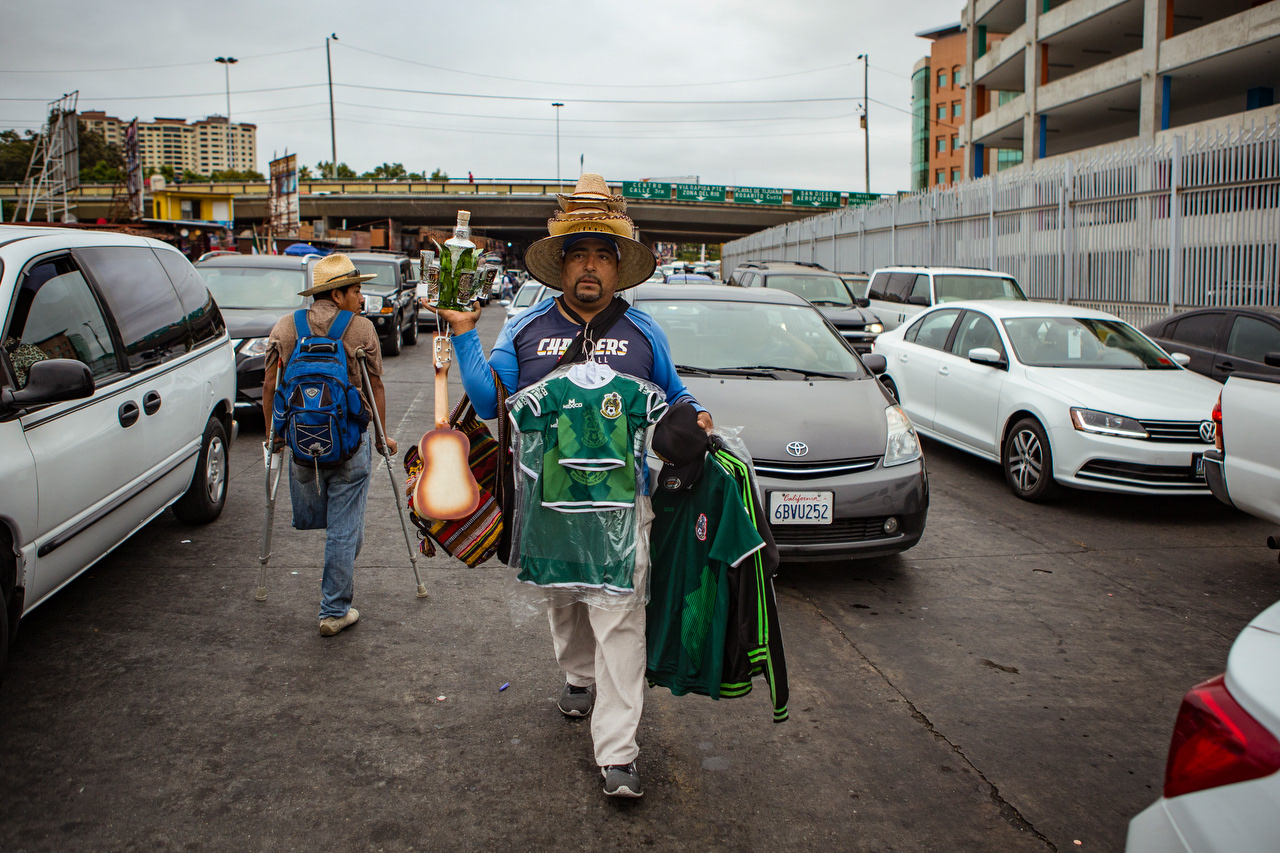
A souvenir vendor passes by a disabled man begging for money. The borderline is a crucial source of income for many Tijuana residents, whether they are selling merchandise, performing for tips or asking for donations.
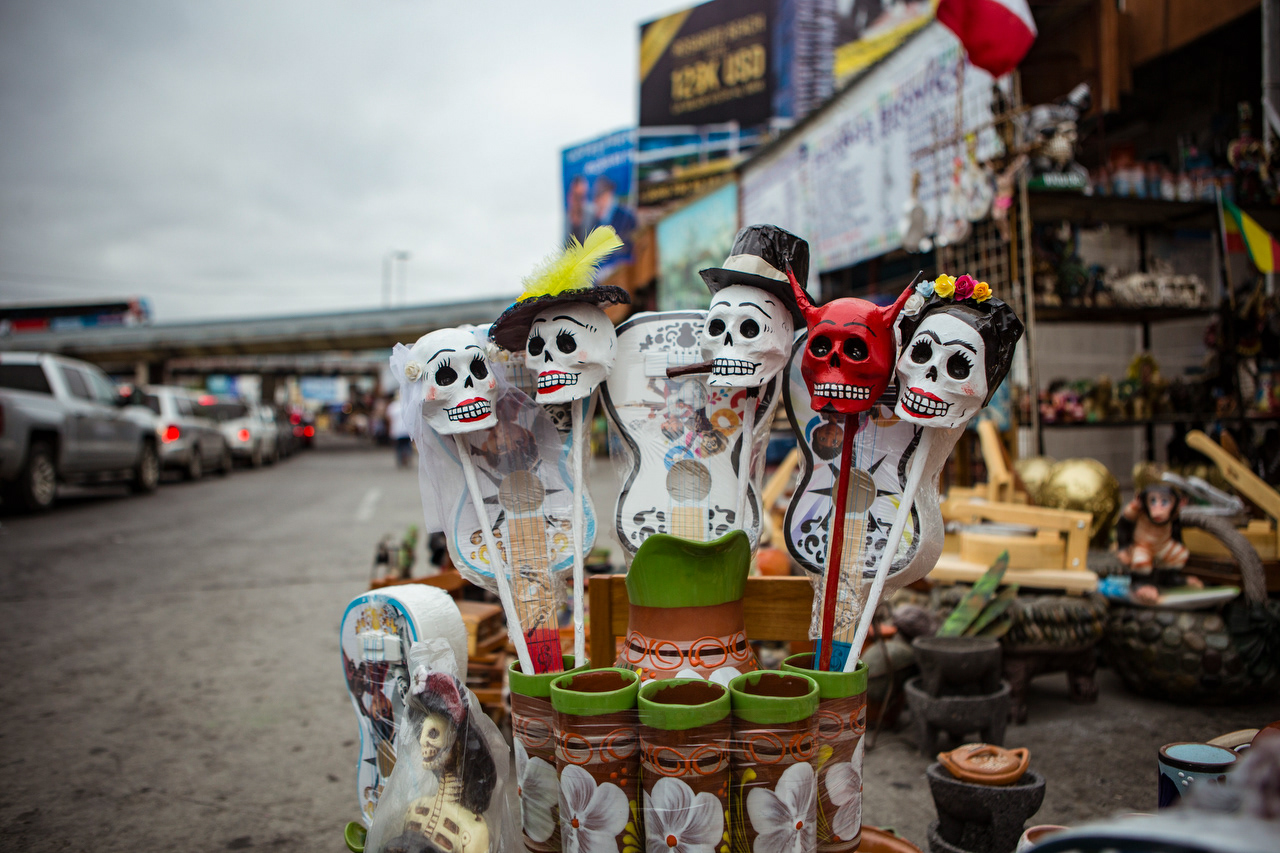
Papier-mache skulls for celebrating Day of the Dead, or Dia de los Muertos, which is celebrated every November in Mexico. Other handicrafts at the shop depict religious figures, sports teams and the latest Marvel super heroes.

Tijuana native Nacho Ruiz, 47, stands in front of the artensanías (handicrafts) shop where he is employed. Ruiz has worked the line for over 30 years, always among family and friends and says he wouldn’t want any other job. “I would never leave” says Ruiz, “the line is my life.”
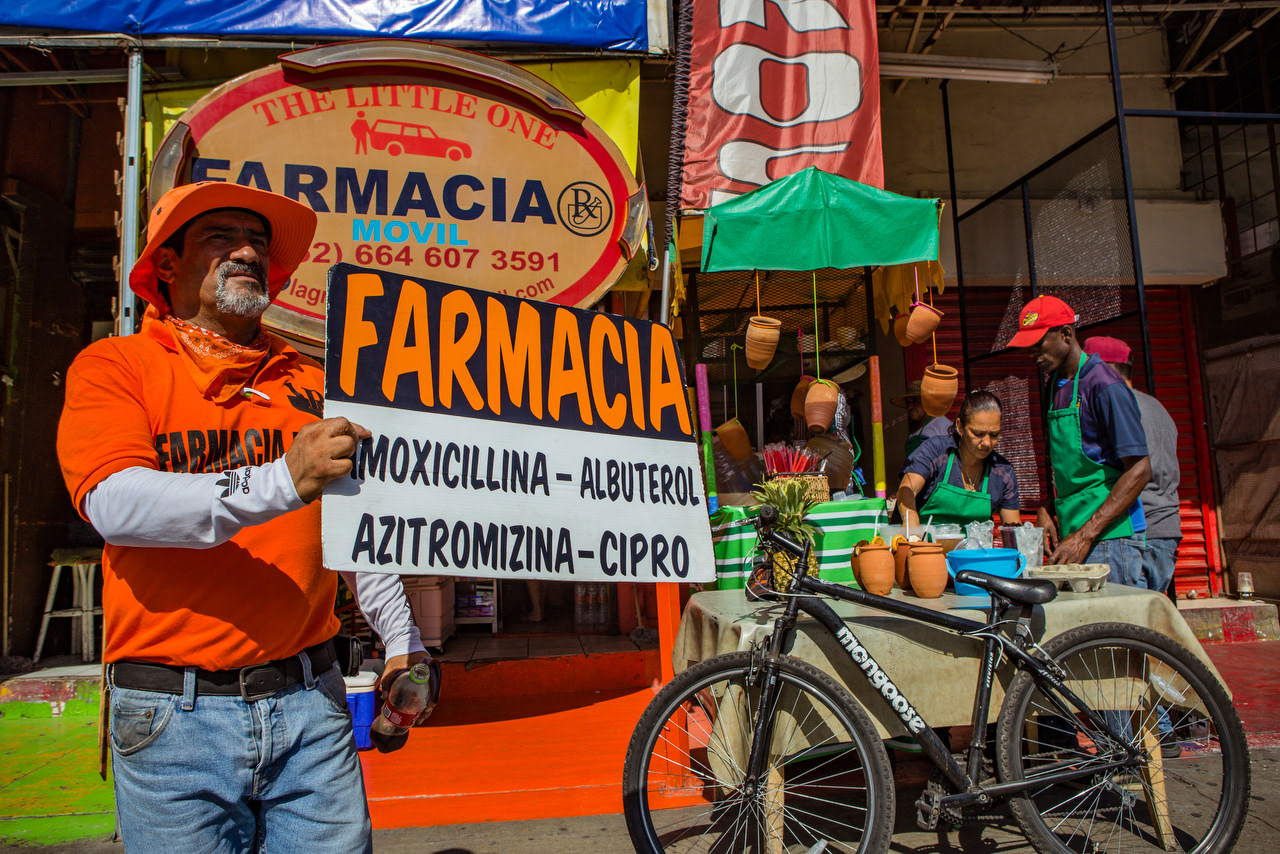
Prescription drugs are significantly cheaper in Mexico than in the U.S and for many Americans travelling south of the border is the only way they can get the medications at a reasonable price. The practice has become so common that vendors will now fill prescriptions for commuters while they wait in line.

Having a unique look is a common strategy to stand out from the numerous other people working the line. This man, who identified himself only as Shrek, alternates between taking pictures for tips and washing car windshields.

Student Wendy Hernandez, 19, fills an order of aguas frescas, a popular Mexican drink usually made from a blend of fruit, sugar and water. “I like working here. There are a lot of good people in the line” says Hernandez.
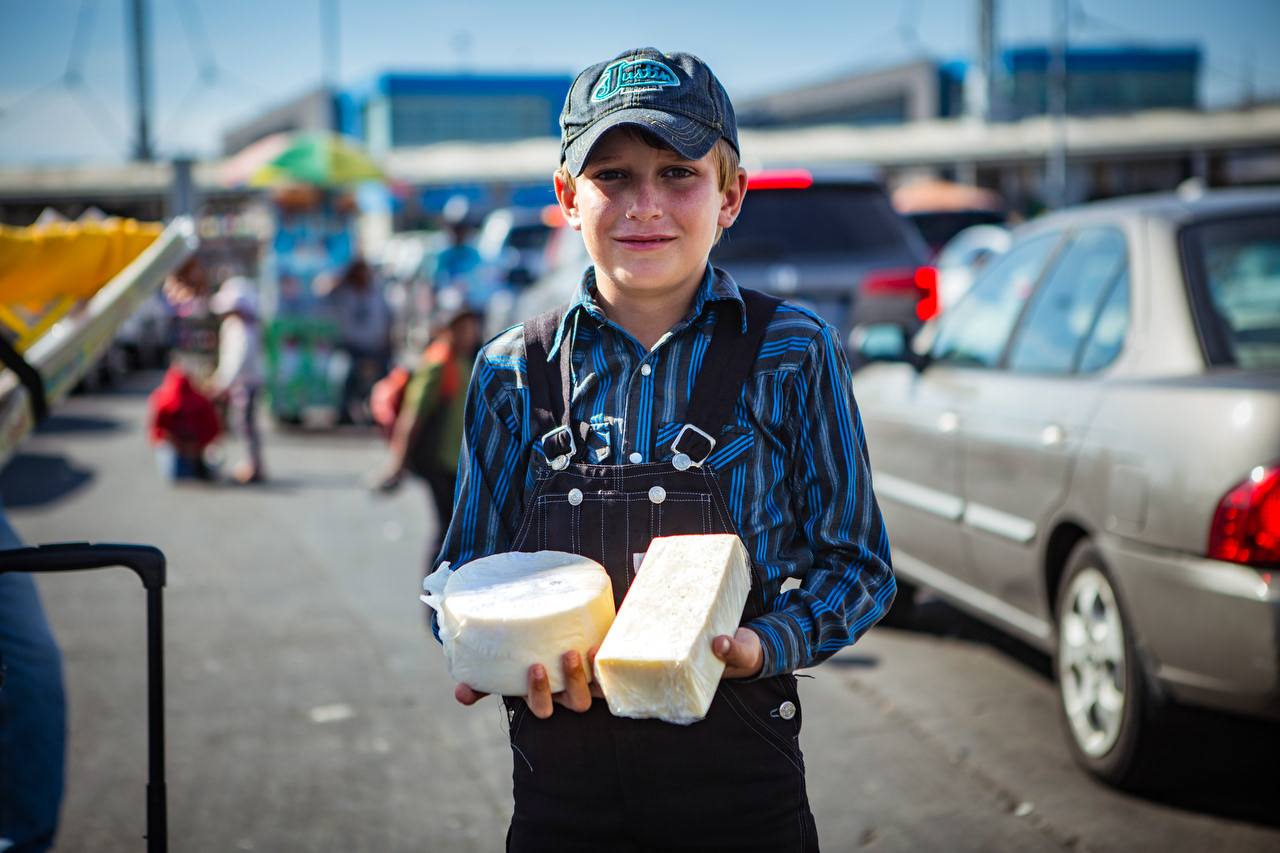
A Mennonite boy sells artisanal cheese right before the line reaches the US side of the border. Around 100,000 Mennonites are estimated to live in Mexico, descendants of Canadian settlers that travelled south in the 1920s so they could live freely in traditional agricultural communities.
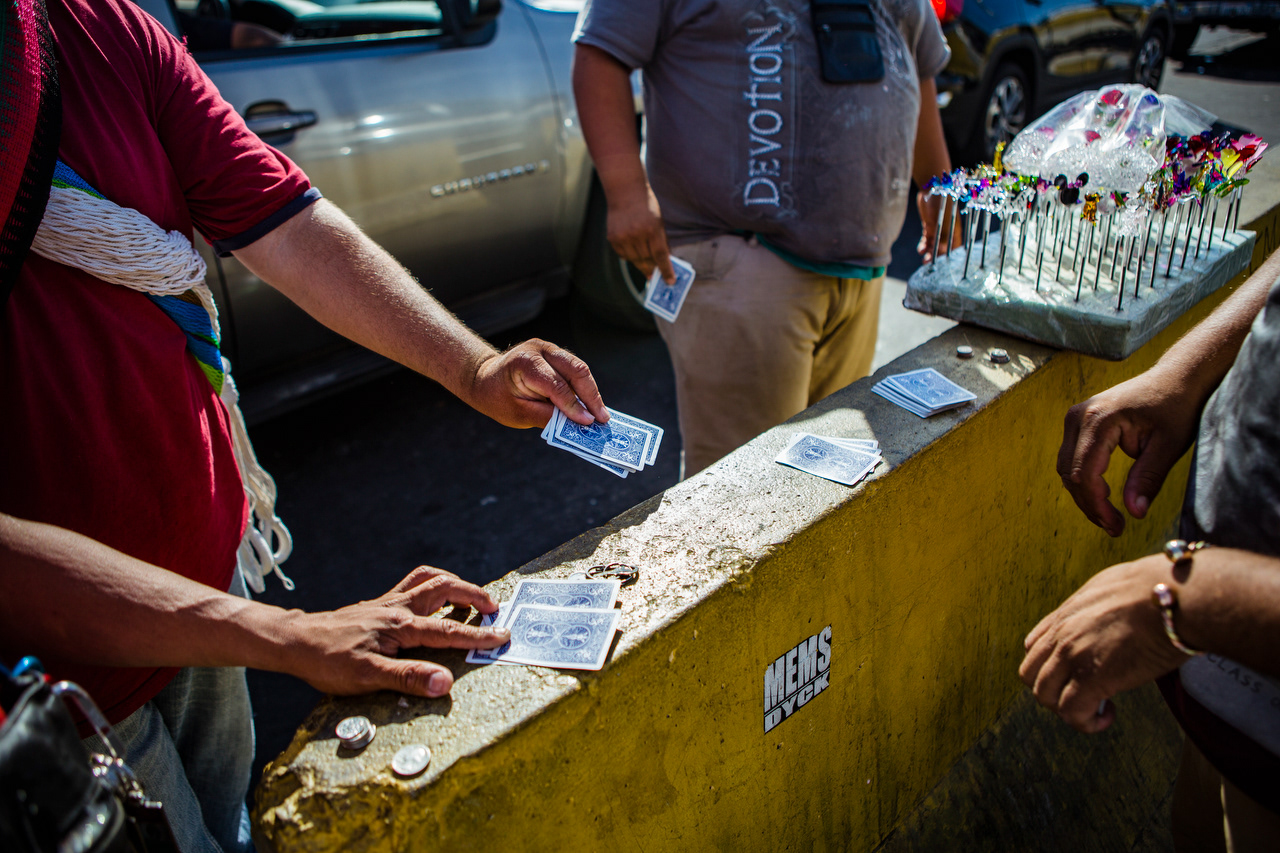
Vendors gamble in between cars while taking a break from the heat.
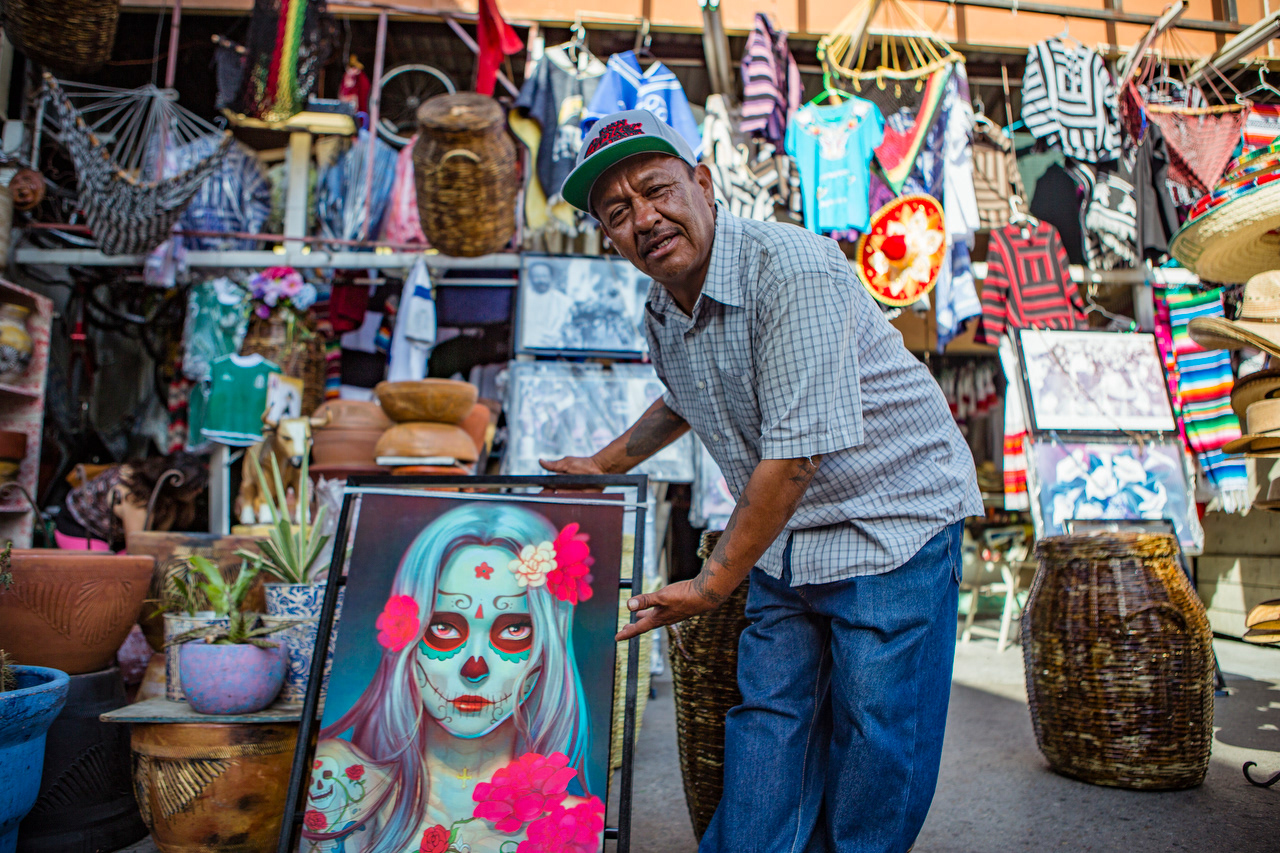
While many traditional handicrafts can be found for sale, almost exclusively for tourists, much of the decorative items being offered are a blend of old and new styles.
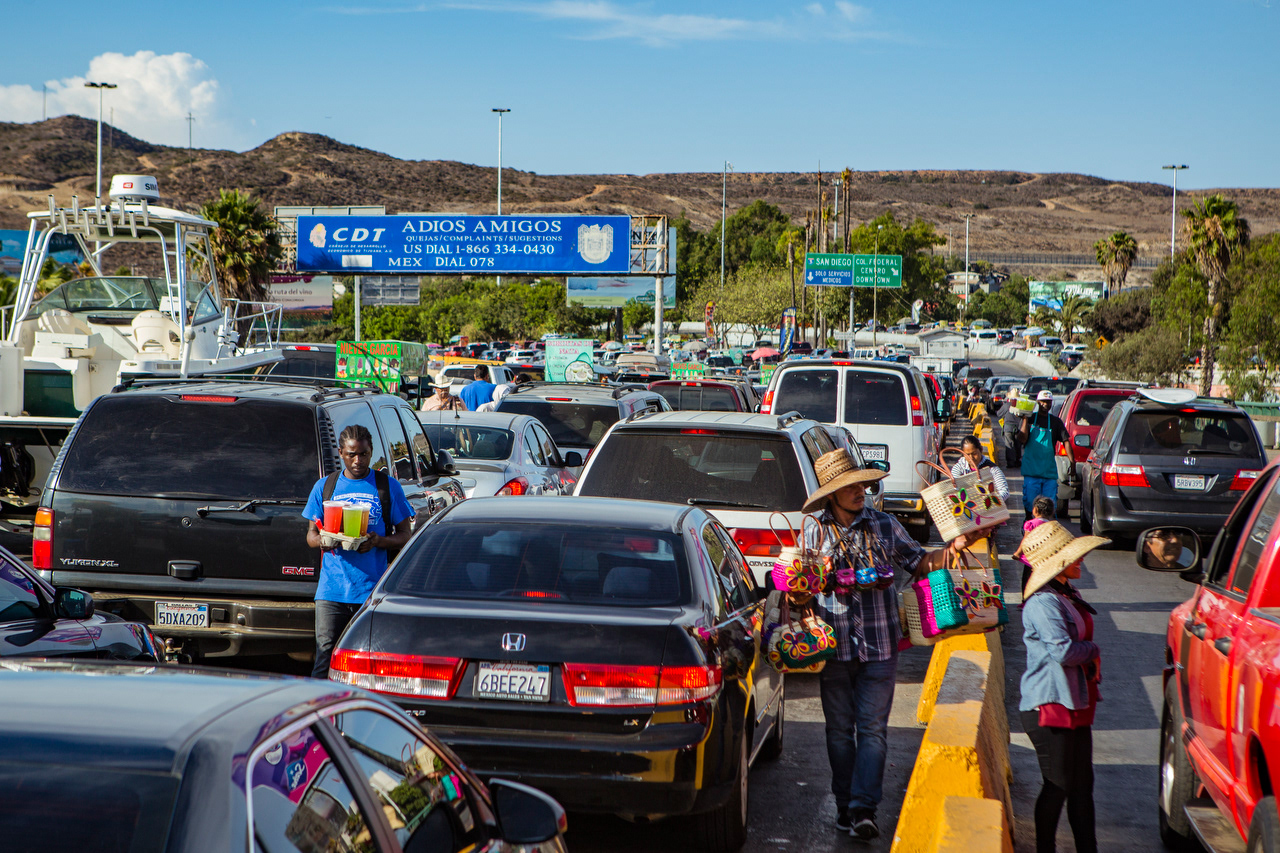
People come from all over to work the border line, both by choice and out of necessity. Many people say they’ve started to notice more Haitians taking jobs, a result of 3,000 refugees from the Caribbean country who were denied access to the United States in 2016 and now adjusting to life in Tijuana.
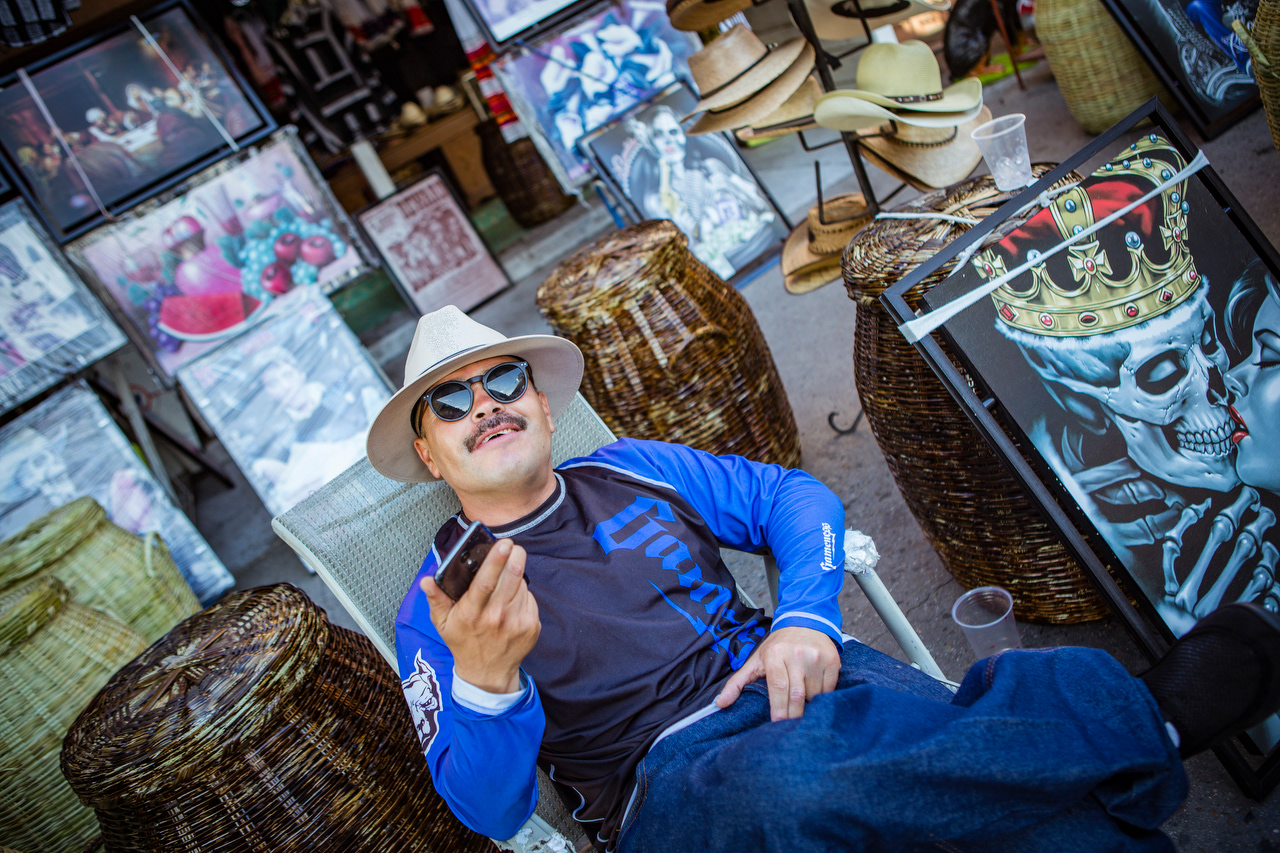
Carlos Bueno relaxes near the end of a long day. He has many friends and family in the line, and for him these links are an integral part of working here. “We take care of our business, we take care of our people,” says Bueno, “when something wrong is happening we deal with it.”

